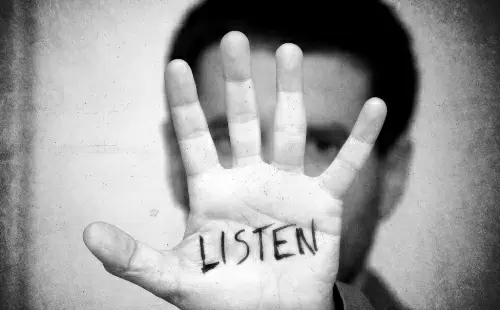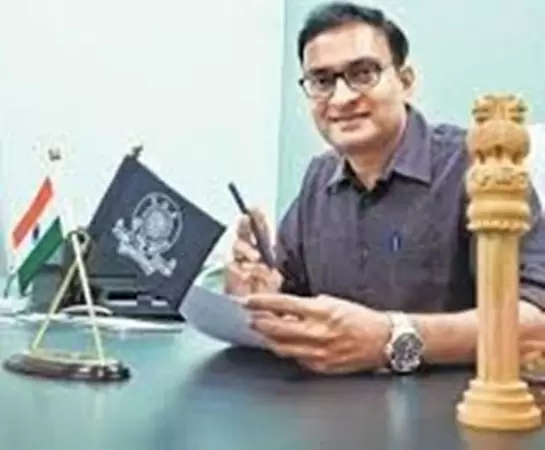All about the fine art of listening
23-January-2016
Vol 7 | Issue 4
Years ago, when I was a communications major in graduate school, “active listening” was a big piece of the curriculum. It seemed a light weight subject at the time.
Later, when I taught listening skills to my own students, they too assumed it was a ho-hum ‘no brainer’ largely because the literature on paying attention to others - really hearing them - seemed to belabour the obvious: that people need to be heard, validated and appreciated.
 |
|
In today’s world the need to really listen to one another, to validate and bring comfort, is more vital than ever (Photo: WFS)
|
But the fact is that listening – giving our full attention to another – does not always come naturally. And the value of full attention, which leads to understanding and, therefore, appropriate response (which in some cases is no response, just listening), is often overlooked.
I was reminded of this on several occasions recently. The first was when a young woman I know told me how much she appreciated the fact that I always listen to her. It was a simple statement of gratitude but one laden with meaning.
What she was really saying was that she valued the fact that I took her feelings seriously and offered genuine support, which made her life easier and provided comfort in difficult circumstances. That was deeply important and helpful to her, and it was important to me too. I felt the reward of knowing that by “simply” listening I had made someone’s journey a little bit easier.
That sense of easing someone’s journey through totally silent, wholehearted listening is part of an initiative called The Welcome Johnny and Jane Home Project launched by psychologist and writer Paula J. Caplan.
As Caplan explains, “Through free, voluntary, private, and respectful listening sessions, volunteer listeners help to reduce the common chasms between war veterans and others through the simple act of a nonveteran listening to a veteran from any era. This helps veterans through the power of human connection.”
Listeners who volunteer to “Listen to a Veteran” are not therapists and they are not engaged in active listening that allows listeners to speak, Caplan adds. Except for speaking two sentences, one at the beginning and one sometime during the session, they do nothing but listen.
“But they do so with 100 per cent of their attention and their whole hearts. This model works beautifully,” she says. And as per the research conducted by Harvard University, veterans describe the listening sessions as helpful while listeners say it is wonderfully transformative for them.
"When I came back from Afghanistan, hearing the words ‘thank you’ from people who didn’t know what I had done or seen was an empty gesture,” shares an Afghanistan army veteran reported, adding, “More than anything, I wanted my community to listen to the stories of veterans like myself - to participate in that moral struggle, and gain a deeper awareness of the meaning of war.
The Welcome Johnny and Jane Home Project understands the important role that civilians can perform simply by listening to veterans actively and without judgment, generating new opportunities for veterans to serve their communities by educating them about the nuanced reality of war.”
The third time I thought about the incredible importance and impact of active listening was during a training workshop, which was part of a collaboration between two community-based theatres and a multi-generational performance project called Race Peace, developed in New Orleans “to create a space where people from diverse backgrounds can safely and aggressively challenge the realities and myths of racism in America.” Race Peace also considers “how art can engage people in noteworthy dialogue about challenging social issues.”
Race Peace worked with Next Stage Arts Project (NSAP) and Sandglass Theater, community-based theaters in Putney, Vermont, to conduct a training workshop that included Story Circles in which people sat in small groups and shared their stories.
They were stories of humanity being stripped away. They were tales of wounding behaviour. They revealed moments of humiliation and injustice. The participants, including actors, police officers, and a theater director among others, listened – really listened – to each other. They were, they said, deeply moved and changed by the experience, as were community members who saw their stories performed, by coincidence, in the week of the Baltimore riots in 2015.
According to Eric Bass, co-founder of Sandglass Theater, “The workshop made racism tangible. Real emotions were awakened, there was true honesty and bridges were built.”
“The training was unorthodox by law enforcement standards,” Brattleboro Police Chief Michael Fitzgerald adds. “It was amazing what emerged when we examined personal prejudices.”
“When creative expression of the human experience is shared we are all present for each other in the moment. It’s extremely powerful,” observes Maria Basescu, executive director of Next Stage Arts Project.
These reactions from a variety of arenas testify to the importance and power of active listening in numerous contexts. I wish someone had shared them with me when I was a student, as I would like to have shared them with others when I was teaching.
Perhaps they have even more meaning in today’s world, where the need to listen to each other, to validate and bring comfort, grows ever more vital. Indeed, it seems fair to say, it has never been greater.
(Elayne Clift writes about politics, women and social issues from Saxtons River, Vermont.) - Women's Feature Service














